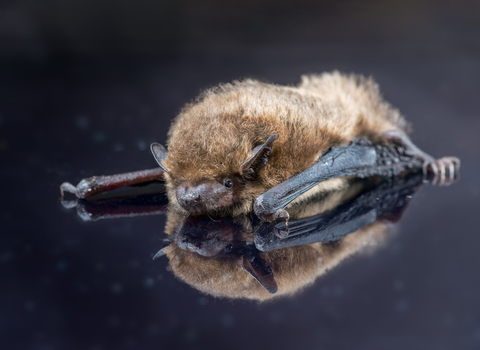About our bats
As the sun sets and skies darken, hungry bats awake from their roost and prepare to take to the skies for an evening feast. As the only mammal that can fly, they are unique nocturnal creatures, adapted to life in the dark.
Bats need to conserve their energy and they do this by roosting upside down, often tucking themselves tightly away in small gaps found in trees and buildings. With special tendons that lock their toes into place when they hang, bats don’t use a muscle. By hanging upside down, they can just drop out of bed, open their wings wide, and fly!
Finding food in the pitch black of night is no easy feat. By sending out high-frequency sound pulses through their mouth or nose, and listening to the echo it produces, bats can sense where things are. This is known as echolocation. These sounds are often out of human hearing range because of their high pitch.
The history
In 2000, a bat maternity roost of over 400 bats was found in the roof of the centre. This bat roost box was designed, built, and donated by Maurice Webber of Conservation Constructions Ltd in 2009 to support the thriving bat population. The roost is monitored by the Essex Bat Group. In July 2019, a total of 1,786 bats were counted at Hanningfield - the largest ever reported for a soprano pipistrelle bat roost in the East of England.

